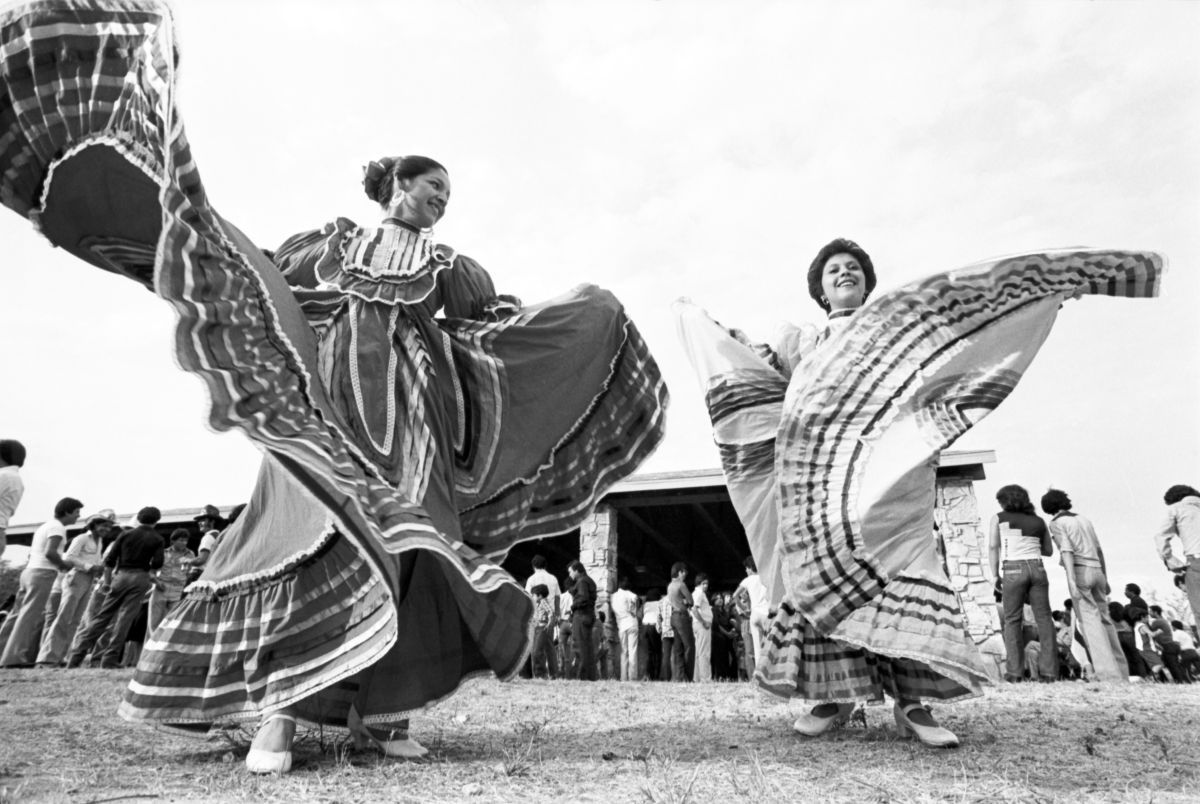

Jackie Valenciano, left, and Carol Morales of the Ballet Folklorico Azteca of Fort Worth rehearse their dance routine for Mexican Independence Day festivities at Echo Lake Park in Fort Worth, September 1982. From the Fort Worth Star-Telegram Collection.
There are several terms used throughout the Latino and Hispanic communities and diasporas. These terms are not always interchangeable and often carry specific information about the identity of an individual and community. It is important to be mindful of these terms as they are presented in texts. When writing about members of these communities, it is important to observe how they self-identify or clarify how they identify. Multiple identities can also be used by the same individual.
Latin America, Central America, Mexico, and the Caribbean are regions with incredible cultural and ethnic diversity. Ethnic identifiers will often precede national identifiers, such as Black Mexican, Indigenous Brazilian, Japanese Peruvian. Due to the affects of the casta system under colonization, colorism, and cultural perspectives on race and ethnicities, individuals may identify solely according to their nationality or culture or have an identity that may not align with American or western concepts of said identity. As always, it is important to follow the lead of the individual and community regarding self-identification.
The following terms serve as an introduction to popular terms used throughout the community, and is not a comprehensive listing.
Hispanic
People who come from Spanish-speaking communities and nations.
Latino
People who come from communities and nations that speak Romance languages.
Latinx/Latine/Latin@/Chicanx
These variations are used to refer to groups and communities while being gender inclusive.
_____-American
Hyphenated terms, such as Mexican-American, Haitian-American, and Colombian-American, are commonly used by immigrants or the immediate diaspora, typically to 2nd and 3rd generations of the diaspora, although many individuals still use hyphenated identities after several generations removed from migration.
Chicano
This term is commonly used by members of the Mexican diaspora who do not have familial connections to Mexico, or are several generations removed from migration. This term likely originated in California, and became widely used during the Civil Rights Era.
Tejano
This term is used by Texans of Mexican descent to denote their cultural backgrounds as being both Mexican and Texan.
Indigenous Identities
The Civil Rights movements brought about new ideas regarding the impact of Indigenous cultures on contemporary Latin-American, Central-American, Caribbean, and Mexican cultures. Many people of Mexican, Central-American, and Andean descent have genetic and cultural Indigenous ancestry. While it is important to acknowledge such backgrounds, we must not erase Indigenous identities, cultures, and communities by using Indigenous identities interchangeably with national or local identities. Indigenous rights issues are more suppressed and violence against Indigenous communities is more ignored when Indigenous identities are absorbed into local and national identities, as the removal of unique Indigenous identities makes it more difficult to acknowledge unique issues within said communities.
As an example: The state of Oaxaca in Mexico is home to several indigenous groups, such as the Zapotec. However, not everyone in Oaxaca is Zapotec, and these identifiers cannot be used interchangeably unless an individual identifies as Zapotec.
Other Terms
Identities can vary from family member to family member, and variation is even greater between different nationalities and ethnicities. As always, it is important to pay attention to how an individual identifies or ask for clarification in a respectful manner.
References

Except where otherwise noted, this work is licensed under a Creative Commons Attribution-NonCommercial 4.0 International License. For details and exceptions, see the Library Copyright Statement.
© 2016-23 The University of Texas at Arlington.
University of Texas Arlington Libraries
702 Planetarium Place · Arlington, TX 76019 · 817-272-3000